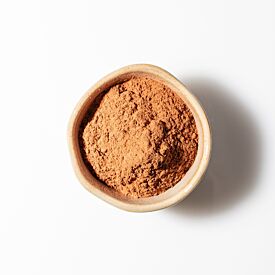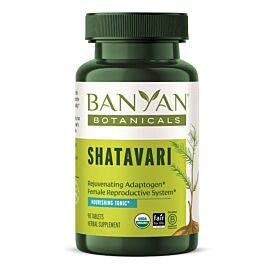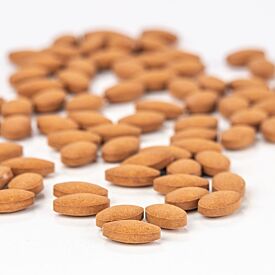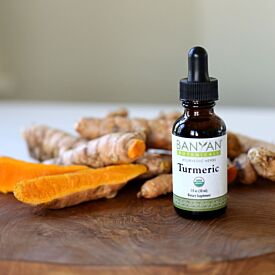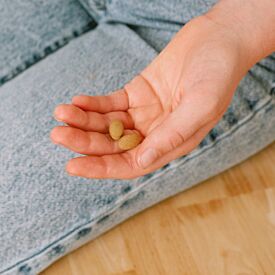Manjistha: Getting to Know Your Herbal Allies
Summer is here! Suddenly, we are faced with triple-digit temperatures, long, bright days, and so much pitta. As we see the temperature creep steadily upward in the world around us, we feel our own internal thermometers rise. And along with this, we can get hot-headed, hot-blooded, and in desperate need of pitta pacification. What better way to chill out than from the inside-out? Manjistha is a fantastic first line of defense to keeping pitta in balance, particularly in the summer season when our environment is mirroring the energetics of pitta. Not only will it help correct excess pitta, it can also help keep pitta in check before things get out of hand.
Manjistha can also be a great friend when working to reduce excess kapha. This purifying herb is known to help the body’s channels flow, and it infuses the physiology with its cooling and cleansing energetics, from the circulatory system to the blood tissue layer, the liver, kidneys, menstrual cycle, and even the mind. Manjistha is truly that cool ally we can lean on any time we want to deeply support a calm pitta, a reduced kapha, healthy blood, and so much more.
Deep-Roots
Manjistha is a prickly climber that can grow up to nine feet, and its stems and branches are covered in glossy, vibrant green heart-shaped leaves.1 Its longstanding fame, however, lies beneath the ground in its thin, spreading, red roots. These roots have a revered place in Ayurveda and in Traditional Chinese Medicine for their incredible powers. They also have another colorful history—that of a natural dye for cloth and painting that spans thousands of years and across several continents. This long timeline can be seen across the globe—in a dyed cloth from India that is 5,000 years old, a 3,500-year-old dyed belt in the famous tomb of the Egyptian Pharaoh Tutankhamun, 2 in the manjistha-dyed robes of warriors to represent their victory,3 and in its 2,000-year history in ancient China, where it was considered one of the most important dyeing agents and became a huge cash crop.4 In many places it was used in beauty regimes as a natural rouge to redden lips, cheeks,5 and even in hair.6 As trade routes opened up, manjistha was carried thousands of miles and found new homes in Europe, Asia, Africa, and the Americas. By 1865, worldwide production of manijstha and a couple of its close cousins reached its zenith at 70,000 tons a year!7This market crashed in 1869 with the creation of a chemically-made dye that could be sold at a more affordable price.8

Balances Blood, Skin, and More
Those red roots are still highly respected in Ayurveda and in Traditional Chinese Medicine, where it is known as Qian Cao Gen.9 Just as the roots spread easily through the soil, manjistha spreads within the physiology, particularly in the circulatory system and in the first two tissue layers, rasa dhatu (plasma and lymph tissue layer) and rakta dhatu (blood tissue layer). This connection, particularly to the blood, sets the stage for much of manjistha’s work in the body. Manjistha literally translates as “bright red,” acknowledging not only the color of the roots, but also how these red roots have a deep connection with the blood.10 This is no small partiality, either. Manjistha is one of the best—perhaps even THE best—of the blood purifying herbs in Ayurveda. This is also recognized in TCM, where it has the nickname “Xue Jian Chou;” the literal translation means that “the blood becomes so sad once it meets the madder [manjistha] herb,” alluding to manjistha’s powers to rid the blood of any imbalance.11
Manjistha’s success in balancing the blood is thanks to its ability to soothe and pacify pitta while also helping to reduce any excess kapha. Any time the blood is in need of cooling down and cleaning up, manjistha is the perfect answer thanks to its purifying nature. It is not particular about what it is cleaning and clearing—whether there is a build-up of ama, too much heat, pitta aggravation, or excess kapha in the form of stagnation, like the best cleaning crew, manjistha leaves rasa and rakta feeling squeaky clean, balanced, and happy. While cleaning, manjistha can sweep away excess kapha that may manifest as blockages in the channels, further helping the blood flow freely (and healthy flow of urine, for that matter).12 Manjistha even spreads to the liver in its quest to help bring balance. There is quite a complex back-and-forth between the liver and the blood, and manjistha is there, helping to ensure any exchange is healthy and balanced, keeping both the blood and the liver itself functioning well.13
Some positive ripple effects of all this work that manjistha can do? Thanks to healthy rasa and rakta dhatus, those first two tissue layers, all the other tissue layers will be set up for success. Rasa and rakta lay the foundation for health in the other, deeper tissue layers by passing along nutrients. The healthier they are, the healthier the deeper tissue layers can be.14
Another great outcome of manjistha’s work? Incredible skin! Manjistha is renowned for its ability to bring balance to the skin, particularly when pitta or kapha excesses may be present. And it can help improve the complexion, leaving it bright, glowing, and radiating health from the inside-out.15
Manjistha’s list of accomplishments continues. Manjistha can even correct imbalances in the menstrual cycle. It helps balance excess kapha congestion and occasional discomfort, as well as excess heat and irritation from pitta, while helping to promote a healthy flow. When there may be kapha congestion and occasional discomfort in the cycle, manjistha mixed with shatavari can help soothe and correct the imbalance. It has even been used traditionally by Ayurvedic practitioners to help support healthy pregnancies (please consult your doctor if you’re interested in learning more about this).16
And manjistha is definitely indicated when there is excess pitta in the mind and emotions. Thanks again to its cooling effect, it can calm down heated emotions.17 Manjistha can bring this result on its own, or try adding some Ayurvedic nervines like brahmi, bacopa, or bhringaraj for additional support.

Cooling Excess Heat, Drying Up Excess Dampness
How manjistha can do all it does can be explained in part by its rasa (tastes) and virya (temperature). Manjistha is comprised of the three tastes most pacifying to pitta—bitter, astringent, and sweet—and all three of these tastes are cooling, lending to manjistha’s cooling virya. This is a perfect energetic combination to tackle excess pitta. Both bitter and astringent tastes are cooling, and bitter taste is recognized as deeply cleansing to the whole body, especially to the blood. Plus, bitter taste cleanses the liver, the starting place for rakta dhatu.18 Astringent taste also helps to cool off the blood while supporting the integrity of this tissue layer.19 As for that sweet taste, it has more of a soothing, pacifying action toward pitta within the body,20 aiding to manjistha’s overall cool energy. And, of course, with manjistha’s virya as cooling, this is a great way to extinguish any excess heat. Incidentally, bitter and astringent are also great for reducing excess kapha. Both help to dry up any excess kapha dampness within the system, and in manjistha’s case, they also help remove any kapha stagnation and obstructions that may get stuck.
With all this talk of cooling actions, those of us with elevated levels of vata need to approach manjistha with care. It is best to lean on manjistha’s help when it is in a balanced formula to help ensure manjistha won’t cause further imbalances for vata.
The Many Formulas with Manjistha
Manjistha can certainly accomplish a lot on its own, but it can go even further when added to a formula. We have already mentioned a couple formula suggestions, and we encourage you to play and experiment to find the formula that works best for you! For a few more suggestions, you can tweak the formula based on what you’re trying to accomplish. Are you looking to support your blood? Manjistha does well with neem, turmeric, and guduchi, three herbs that are also well-known for their support of healthy rakta dhatu and cooling down excess pitta. We have combined all these herbs with manjistha in our Blood Cleanse tablets. This is a great formula when either occasional cleansing of the blood is needed or even for longer periods of deeper detoxification is desired. A little more cooling in nature, this formula is wonderful for pacifying pitta overall.
Or perhaps you are looking to support your skin. All of these herbs will also help manjistha in supporting the skin, but if you’re looking for a more tridoshic formula, try adding anantamul to the mix. Healthy Skin tablets are another option, which do indeed combine anantamul, manjistha, turmeric, and neem. We also offer Soothing Skin Balm, which has the same herbs as Healthy Skin tablets but is infused in a base of castor oil, sunflower oil, and beeswax.
Just reviewing all that manjistha has to offer helps us feel more balanced. Thank goodness for manjistha! We know we can turn to this herb whenever our pittas are threatening to boil over. And we also know that by incorporating manjistha into our routines, we’ll have glowing skin, healthier tissue layers, and an entire physiology that goes with the flow, from an optimally-functioning circulatory system to cooler and calmer emotions. However you choose to use manjistha, and you will find that this ancient herbal ally will coolly and calmly deliver all that it promises, leaving you relaxed and able to enjoy the glories of summer. Hallelujah to that!



